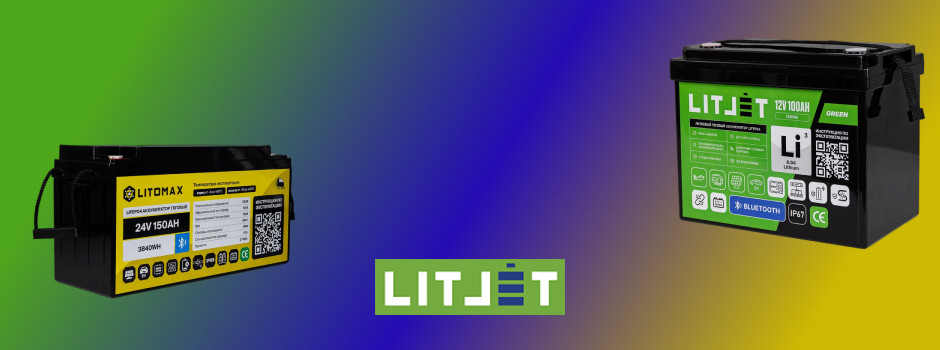The role of batteries in solar energy systems
Obtaining stable voltage from solar panels is difficult due to the variability of solar radiation: intensity, angle of incidence, time of day and geographical location. Inverters stabilize the voltage by converting it to 12 V DC or 220 V AC.
However, energy generation occurs only during the day. To ensure round-the-clock power supply, batteries are needed that store energy during the day and release it at night. Although it is possible to operate a solar plant without batteries, it is limited by daytime and power availability.
LiFePO4 batteries significantly expand the capabilities of a solar power plant, providing convenience, capacity and durability.
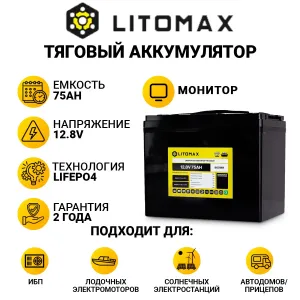 |
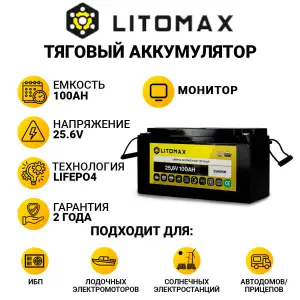 |
Types of solar power plants
Solar power plants are divided into three types:
- network
- offline
- hybrid
The grid is connected to a common power grid, partially replacing electricity consumption. Autonomous ones operate independently of the grid, using batteries to store energy.
Hybrid systems, the most common, combine the advantages of both types, using the grid with a lack of generation and selling excess energy.
Network solutions are optimal for commercial facilities, autonomous solutions are suitable for places without network access, and hybrid solutions are a universal option.
The choice of the type of power plant depends on individual needs, the volume of generation, budget and other factors.
How to choose a battery for solar panels
The selection of batteries for a solar power plant begins with determining the required capacity. The house usually requires 5000-6000 Wh, providing autonomous operation at a load of 1-2 kWh for about 3 hours (including household appliances). The capacity can be expanded gradually by adding batteries.
The calculation of the required capacity includes an assessment of the total load of all devices (on average 1-2 kWh, with peaks up to 6-8 kWh), consumption at night and the duration of the absence of solar generation.
The battery voltage should match the voltage of the solar panels to minimize conversion losses (for example, 48-60 V batteries are suitable for 50 V panels) .
The need for ventilation and maintenance
Traditional lead-acid batteries require installation in well-ventilated areas and regular maintenance, including checking the density of the electrolyte. In contrast, lithium-iron-phosphate (LiFePO4) batteries are ideal for solar power plants due to their unpretentiousness. They can be installed in rooms without ventilation, they do not require maintenance throughout their entire service life and do not emit gases, eliminating the need to control internal pressure.
The only requirement for the operation of LiFePO4 batteries is to maintain an optimal temperature, preventing both hypothermia and overheating above 60 degrees.
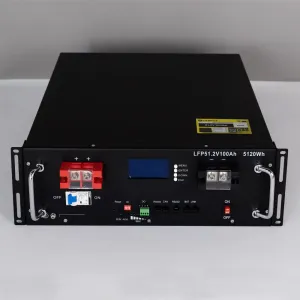 |
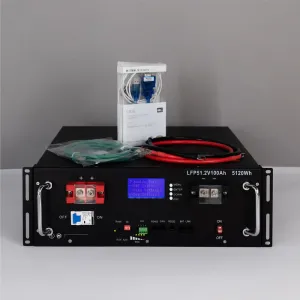 |
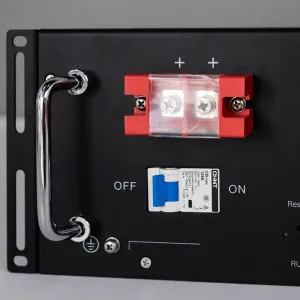 |
Operating voltage
The optimal battery operating voltage for a solar power plant should be as close as possible to the voltage generated by solar panels in order to minimize conversion losses. Common battery voltage options:
- 12V
- 24 V
- 48V
- 60V
With a higher power generated, it is advisable to use a higher voltage to reduce the current and reduce cable heating. Solar panels generate direct current with alternating voltage (for example, from 30 to 50 V for a 48 V system), which is stabilized by an inverter before being supplied to the batteries.
Service life
LiFePO4 batteries have a significantly longer service life (8-15 years) compared to lead-acid (2-4 years). Lifepo4s can withstand 3,000 to 5,000 charge/discharge cycles before capacity drops by 20%, and have a total life of about 7,000 cycles.
Lead-acid batteries can only withstand up to 400 cycles. Thus, lifepo4s last 5 times longer, do not require maintenance, and despite the higher initial cost (3-4 times), they are more cost-effective in the long run, theoretically operating for up to 20 years in a gentle mode with minimal capacity reduction.
Safe discharge depth
An important parameter of batteries is the depth of safe discharge (GBR). For lead-acid batteries, the GBR is only 40-60% of the nominal capacity. For example, a battery with a capacity of 50 Ah (600 Wh) safely gives only 240 Wh, and a regular discharge of up to 600 Wh will lead to rapid degradation (after 50 cycles). The user must independently control the discharge level.
LiFePO4 batteries have a 100% GBR, thanks to the built-in controller that automatically turns off the load when a critical discharge level is reached. This saves the user from having to monitor.
Self-discharge rate
The self-discharge rate also varies significantly. For LiFePO4, it is about 3%, allowing you to keep the charge for several years of storage without degradation. Lead-acid batteries have a significantly higher self-discharge rate (25% in the first 3-4 months, and another 50% in the next 6 months).
The idle time of a lead-acid battery for more than 1.5 years leads to a voltage drop below the safe level and degradation. Thus, LiFePO4 batteries demonstrate a clear advantage in self-discharge rate, which makes them the optimal choice for solar power plants.
Operating temperature
The operating temperature range of LiFePO4 batteries is wider than that of lead-acid batteries: -20°C to +60°C versus -15°C to +40°C. This makes LiFePO4 safer to operate.
Even under heavy load, LiFePO4 batteries heat up slightly (up to 25-30°C at room temperature), which is an additional advantage.
Dimensions and weight
LiFePO4 batteries have a higher energy density. This means that with the same capacity of LiFePO4, the battery will have smaller dimensions and weight compared to its lead-acid counterpart.
Accordingly, less space will be required to install the LiFePO4 battery pack.
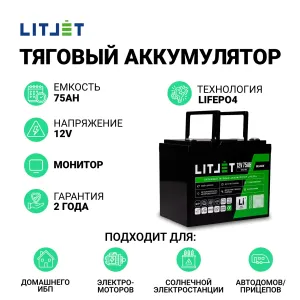 |
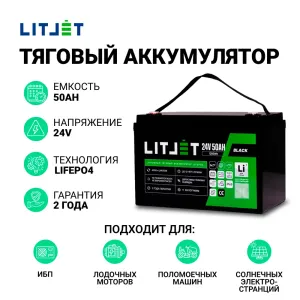 |
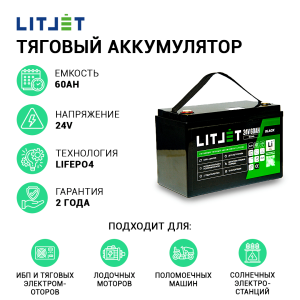 |
Advantages of using LiFePO4 batteries for solar panels
LiFePO4 batteries are the optimal choice for solar power plants due to a number of advantages:
- Durability: The service life is 8-15 years with the preservation of capacity and the ability to withstand at least 3,000 charge-discharge cycles. Batteries provide full energy efficiency throughout their entire service life.
- Low self-discharge: Minimal self-discharge makes this parameter practically insignificant during continuous operation, including periods of low or no solar generation (for example, in winter). Batteries act as a reliable buffer.
- High capacity: LiFePO4 has a high energy density, second only to lithium-ion batteries, which, however, are less suitable for solar power plants in other parameters.
- Stable voltage: Even at high load (more than 2-3 kW), the voltage drop of LiFePO4 batteries is much smoother than that of other types.
- Compact size and weight: LiFePO4 batteries are about half the size and 20-30% lighter than lead-acid batteries, which saves space and reduces the load on the structure.
- Robust housing: The metal protection of individual cells inside the durable ABS housing provides high resistance to mechanical damage, unlike more vulnerable lead-acid batteries.
- Economic efficiency: Despite the higher initial cost, LiFePO4 batteries pay off due to their long service life (at least 10 years), providing long-term savings and accelerating the payback of the entire solar power plant.
- Easy operation: Built-in controllers and BMS boards automate charging processes, prevent critical voltage drop and battery degradation. Installation and connection require minimal effort, and maintenance is limited to periodic (once a year) capacity checks. Many inverters provide remote monitoring of battery status.
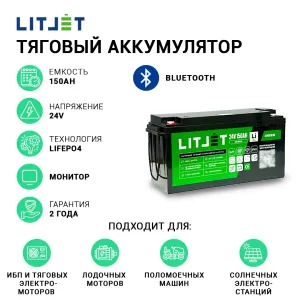 |
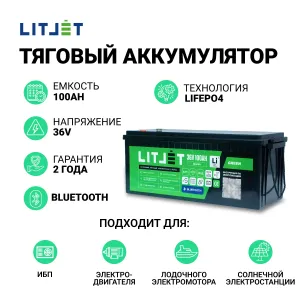 |
Connection and operation of LiFePO4 battery
LiFePO4 batteries are connected to a solar power plant in series (voltage summation) or in parallel (capacity summation).
-
A serial connection (for example, two 12V batteries) creates a battery with a voltage of 24 V (the minus of the first battery is connected to the plus of the second; the output is plus of the first and minus of the second).
-
A parallel connection (for example, two 100 Ah batteries) gives a battery with a voltage of 12V and a capacity of 200 Ah (minus to minus, plus to plus). This allows for flexible configuration of the system, using multiple 12V batteries to achieve the required voltage.
LiFePO4 batteries are connected to a solar power plant via a compatible inverter that converts and stabilizes the voltage.
Additional safety measures that must be observed when connecting a LiFePO4 battery
- It is forbidden to short-circuit the battery contacts.
- It is necessary to maintain room temperature (10-18°C) in the room with the installation, providing ventilation for large systems.
- Mechanical impact on the housing is prohibited.
- Use suitable busbars to connect multiple batteries.
- It is necessary to maintain humidity up to 60-70% and protect the contacts from water. LiFePO4 batteries are fireproof even in case of damage.
Cost and payback
LiFePO4 batteries are more expensive than lead-acid batteries (GEL and AGM), but they have a significantly longer service life.
Cost of 1 kWh capacity:
- LiFePO4 – 0,06 USD,
- GEL – 0,21 USD,
- AGM – 0,42 USD.
Despite the higher initial cost, LiFePO4 pays off in 3 years of operation at home.
Common mistakes when using LiFePO4
- Incorrect capacity calculation: Insufficient battery capacity makes it impossible to accumulate enough energy generated by a solar power plant. Excessive capacity leads to unjustified costs and the downtime of a significant part of the storage capacity.
- Hardware incompatibility: Using LiFePO4 batteries with an inverter designed for lead-acid batteries, even at a similar rated voltage, leads to incorrect operation and premature wear of the batteries.
- Violation of operating conditions: Overheating of batteries above +60°C (for example, due to direct sunlight) or hypothermia below -20°C accelerate cell wear and degradation.
To avoid such errors, it is recommended to entrust the installation, configuration and testing of a solar power plant system with LiFePO4 batteries to qualified specialists.
 |
 |
Why LiFePO4 is the best choice for solar energy
LiFePO4 batteries are the optimal solution for solar energy, providing cost-effectiveness and ease of operation. Key advantages of LiFePO4 over other types of batteries:
- Compactness: They take up less space than other types of batteries of similar capacity.
- Increased safety: Safer in operation, including with regard to fire safety.
- Environmental friendliness: They do not emit harmful substances into the environment.
- Maintenance-free: They do not require maintenance throughout their entire service life.
- Possibility of indoor installation: They are suitable for indoor installation, including residential ones, which makes them an ideal option for home power plants.
- Stable voltage: They provide smooth voltage reduction during discharge, protecting the inverter and connected equipment from damage.
Thanks to improved manufacturing technologies, LiFePO4 batteries have become affordable, making them a cost-effective solution.
When creating autonomous or hybrid solar power plants, LiFePO4 batteries are the most efficient and practical option for energy storage and storage. It is important to choose high-quality batteries from trusted manufacturers with a guarantee.

